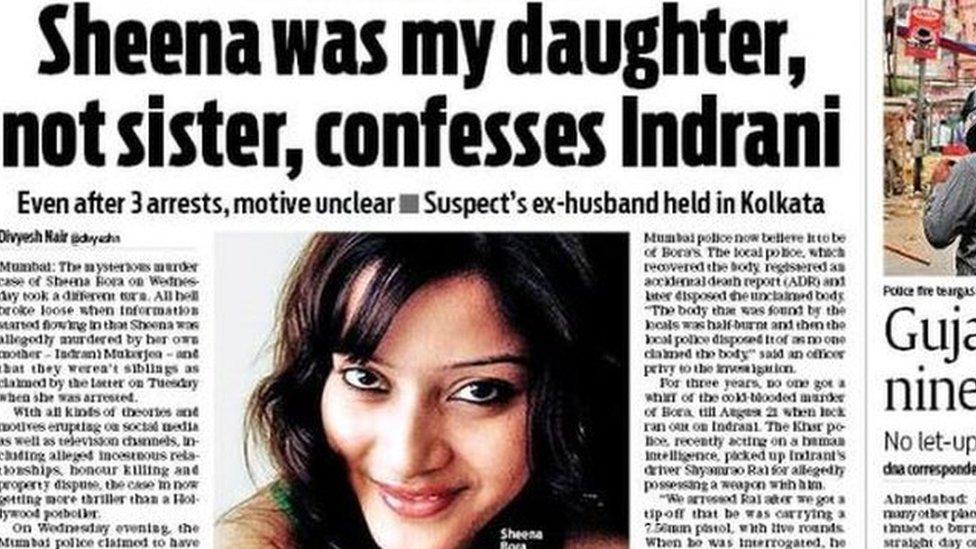Viewpoint: How a 'breaking' murder has exposed Indian media
- Published
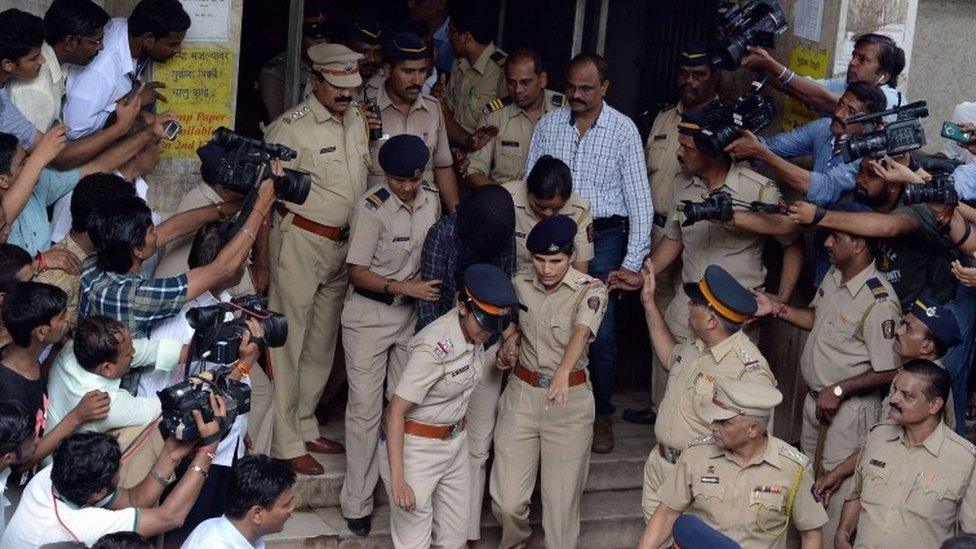
The cameras have followed Indrani Mukerjea who is accused of murdering her own daughter
For the last few days, India's media have been riveted by a murder mystery. But the hysterical coverage, full of speculation and innuendoes, is disturbing, writes politician and author Shashi Tharoor.
A burned skeleton has been exhumed that is presumed to be that of a young woman who allegedly was strangled to death by her own mother three years ago.
That the mother is a thrice-married socialite who was CEO of a television channel, and that she had told her current husband that her daughter was her sister, has added spice to the rumour mill being relentlessly ground on our 24/7 channels.
But is the murder even a mystery? Not if you believe the media, which, fuelled by seemingly authoritative leaks from the police and a bewildering array of disloyal "friends", has already convicted the alleged murderess.
Trial by media
From the breathless and hysterical coverage inundating the Indian press and TV screens, you would scarcely realise that there isn't even proof that the charred remains are those of the missing woman, nor that evidence that a murder has even been committed rests entirely on hearsay.

Indian media outlets have given wall-to-wall coverage to the story
Welcome to India's extraordinary media environment, in which the Fourth Estate serves simultaneously as witness, prosecutor, judge, jury and executioner. In ancient times, India put its accused through agni pariksha - a trial by fire; today, we put them through a trial by media.
Television news in India, with far too many channels competing 24/7 for the same sets of eyeballs and ratings, has long since given up any pretence of providing a public service, with the "breaking news" story privileging sensation over substance. (Indian TV epitomises the old crack about why television is called a "medium": "Because it is neither rare nor well done.")
Sadly, matters are not much better in the print media, which - with its ability to provide context, depth and analysis that television cannot- could have compensated for the limitations of television.
Ratings war
But newspapers too seem conscious that they have to compete in a tight media environment where it is not they, but TV, that sets the pace: every morning they must reach readers who have watched TV the previous day.
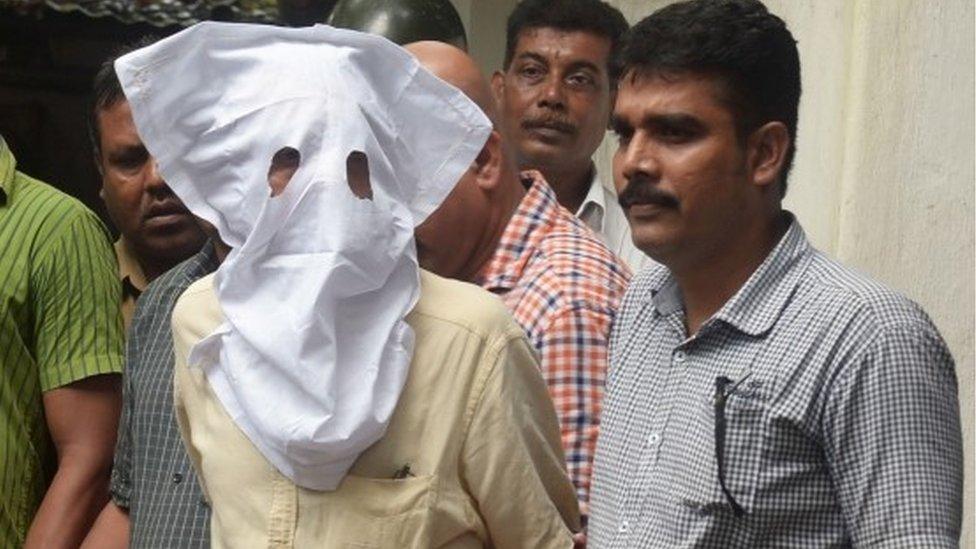
Media gossip has also surrounded Indrani Mukerjea's former husband Sanjeev Khanna who has also been arrested in connection with the murder
So newspapers too feel the need to "break" news in order to be read, to outdo their TV competitors. Most are led by the nose by TV's perennial ratings war, and seek to reach TV-exposed readers each day with a banner headline that stimulates prurience or outrage rather than increase awareness.
The result has been, to put it mildly, disturbing. Our media, in its rush to air the story, has fallen prey to the inevitable rush to judgement: it has too often become a willing accomplice of the motivated leak and the malicious allegation, which journalists today have neither the time nor the inclination to check or verify.
The damage is done in a blaze of lurid headlines - and rectification, if it comes at all, comes too feebly and too late to undo the irreparable damage to innocent people's reputations.
Baseless accusations
The distinctions amongst fact, opinion and speculation, reportage and rumour, sourced information and unfounded allegation, that are drummed into journalism students' heads the world over, has blurred into irrelevance in today's Indian media.
As one who has been treated to repeated doses of speculation, gossip, accusation and worse in the course of the last year and a half, after the tragic demise of my wife, I have been made intimately conscious of these limitations of the Indian media.
Instead of the restraint and caution one might expect from a responsible press where matters of life and death are involved, baseless accusations of murder and suicide have been flung around with abandon.
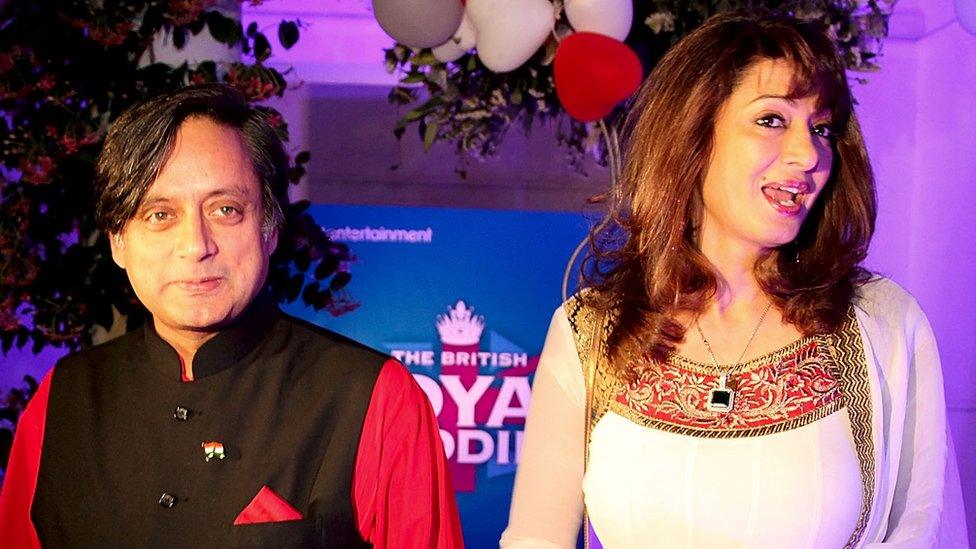
The tragic death of Shashi Tharoor's wife has been subject of much media speculation in India
We have had the spectacle of an unnaturally long-drawn-out media trial, fuelled by motivated leaks, with discussion shows on the voyeuristic Indian TV channels debating accusations and imputations with zero evidence or even elementary research behind any of the statements aired.
Manipulated and malicious claims are reported uncritically, without editors asking even the most basic questions about their plausibility.
Part of the problem is a disinclination to take the trouble to research or verify a story, when so many are willing to feed you their versions of it.
Ranting anchors
The cavalier attitude to facts is compounded by a reluctance to issue corrections, which are virtually unknown in the media world.
The airing of opinions is the cheapest way to fill a broadcast hour; ranting anchors score the highest ratings.
As a result, trust in the media is eroding. A friend summarised the problem succinctly for me: "When I was young, my father wouldn't believe anything unless it was printed in the Times of India. Now, he doesn't believe anything if it is printed in the Times of India."
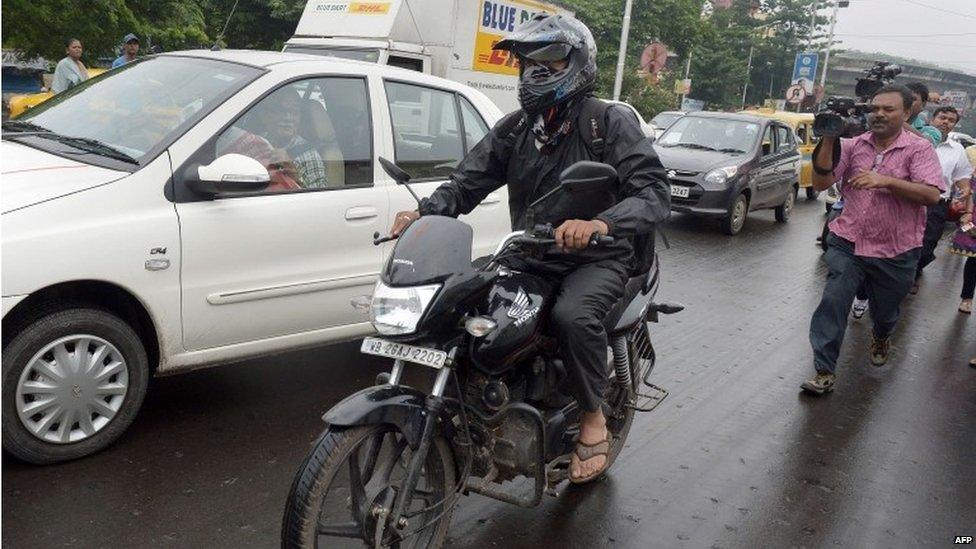
India has a plethora of TV channels now
This should be a matter of serious concern to all right-thinking Indians, because free media are the lifeblood of our democracy.
They provide the information that enables a free citizenry to make the choices of who governs them and how, and ensures that those who govern will remain accountable to those who put them there.
It is the media's job to look critically at elected officials' actions (or inaction), rather than at marginalia that have no impact on the public welfare.
Instead, the media's obsession with the superficial and the sensational trivialises public discourse, abdicates the watchdog responsibility that must be exercised by free media in a democracy, and distracts the public from the real questions of accountability with which the governed must confront the government.
The free press is both the mortar that binds together the bricks of our country's freedom, and the open window embedded in those bricks. No Indian democrat would call for censorship, or for controls on the free press: what we want is not less journalism, but better journalism.
Government needs a free and professional media to keep it honest and efficient, to serve as both mirror and scalpel.
If instead all we have is a blunt axe, society is not well served.
If India wishes to be taken seriously by the rest of the world as a responsible global player and a model 21C democracy, we will have to take ourselves seriously and responsibly as well.
Our media would be a good place to start.
- Published27 August 2015
